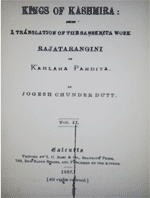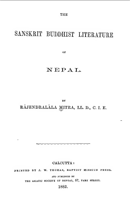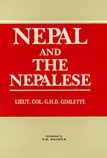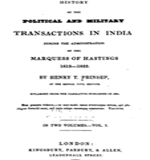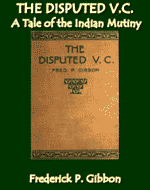
Frederick P. Gibbon, The Disputed VC: A Tale of the Indian Mutiny (London: Blackie & Son Limited, 1909)
There are several books written about the role of Gurkhas in the Indian Mutiny of 1857-58, also called by many as “Sepoy Mutiny”. The Mutiny has also been described as the first war of independence. The war was not immediately successful.
Begun in Meerut by Indian sepoys in the service of the British East India Company, the Mutiny spread to many places including Delhi, Agra, Kanpur, and Lucknow. Frederick P. Gibbon’s The Disputed VC: A Tale of the Indian Mutiny (London: Blackie & Son Limited, 1909) provides some interesting Nepalese references on the Mutiny.
It must be pointed out at the outset that the book is not an analysis of the Sepoy Mutiny as such. Additionally, the Gurkhas were not alone in cooperating with the British East India Company and its armies in suppressing the Mutiny. In Punjab, the Company had the backing of Sikh princes. Some other important princely states of Hyderabad, Mysore, Travancore, Kashmir, and Rajputana also did not join the rebellion. Most of the rebels (sepoys) in the Company’s 300,000 army were Hindu or Muslim. They belonged to Bombay, Madras and Bengal presidencies. The numbers of the British were only about 50,000. The Bengal Army recruited Rajputs and Bhumihar, who mostly came from the Awadh and Bihar regions. Some historians blame these higher caste sepoys for initial mutinies that led to the rebellion.
However, there were many other powerful reasons behind the Mutiny. It is said that the civilian rebellion was more varied. They included the feudal nobility, rural landlords and the peasants. The rebellion erupted in the state of Awadh after the events in Meerut. It is important to note that Awadh had been annexed barely a year before. In 1857, the Bengal Army, which had to suppress the rebellion in this part of the Company territory, had 86,000 men, of which 12,000 were European, 16,000 Sikh and 1,500 Gurkha. Some irregular units of the Bengal Army of the Company actively supported the Company: three Gurkha and five of six Sikh infantry units, and the six infantry and six cavalry units of the recently raised Punjab Irregular Force. These Gurkhas were serving under contractual arrangements with Nepal.
The role of the Gurkhas was incredibly important to the Company to suppress the war of independence. The beginning of the rebellion was much unexpected. It grew rapidly and spread out very fast. It was very hard for Company forces to tackle the rebellion in the beginning. A Nepalese soldier at the front has been quoted as saying: “This war will soon be over. Jung Bahadur is going to march down to Lucknow with his army….He is our prime minister and commander-in-chief in Nepal. He offered to bring an army down to help you English two months ago, and now the government has accepted his offer.” That indeed helped change some of the scenario.
The deployment of tiny Gurkhas, the “Irishmen of Asia”, created panic among the rebels. Ted Russell, an ensign of the 193rd Bengal Native Infantry, stationed at Aurungpore, and one of the principal actors in the book, makes clear that the Gurkhas were eager to come in contact with the mutinous hordes and fight them out. These hordes were even seen by him running with terrified eyes and panting breath at different places. They fought like anything, throwing down musket and bayonet, and drawing their razor-edged kukris and plunged into the thick of their opponents, hewing them down and scattering them on every side by the fury of their charge.
The book lists many instances of the fierce character of Gurkhas and their bravery. One such instance is the chasing down of dozen or so Wahabi fanatics by a single Gurkha “highlander” during a rebellion rally. As per the narrator, the brave Gurkha dismantled the rebels with his kukri leaving them in a state of disarray. The book also glorifies the heroics of Gurkha “picket” that withstood the siege of Delhi for nearly three months under severe threat through bombardment and advancement of rebel fighters.
Similarly, describing the attributes of the Gurkhas and the Nepali Kingdom, Ted Russell states, “these Gurkies ain’t natives but furriners in Injia same as us, livin’ in a furrin country called Nepal, up amongst the Himalayas, which you’ve never ’eard on, I dare say. And the Gurky king ain’t a subject of the queen, like the Injian rajahs and nawabs and nizams and such, but free and independent, like voters at an election. I’ve fought side by side with ’em, … and they’re as good pals on a battle-field as any chaps from Battersea.” This clearly demonstrates the amount of admiration and fondness Ted Russell had for the brave and valiant Gurkhas.
The book also reveals the great loyalty the Gurkha contingent demonstrated towards their British friends. In his book, the narrator discusses of incidents where the rebels tried to persuade the Gurkhas to side with them, luring them with monetary incentives while also appealing to their religious inclination. However, the determined Gurkhas refused to side with the rebels and marched on with the objective of suppressing the Mutiny. This, according to the author, bred hate amongst the rebels towards the Gurkhas. This is clearly demonstrated in the following quote from the book: “Those monkeys of Gurkhas are renegades to their faith!” declared the [rebellious] Brahman priests to those mutineers in Delhi who were of their persuasion.” They prefer to receive the Englishman’s pay rather than follow the dictates of their holy men. Let them be outcasts! Spare them not! When we have destroyed the white men, then shall we deal with them, if any have escaped by that time !”
Even though the Gurkhas were finally overbearing, they also suffered terrible casualties from the mutineers. However, even the wounded ones refused to leave their post. Such was their determination that when the British comrades offered to assist and relocate the injured soldiers to a relatively less threatened zone, where they could receive medical assistance, they flatly refused instead preferring to stay by the side of their battling comrades.
Moreover, there is much in the book that shows how Gurkhas interacted with the British enriching each other with love and forbearance. Both contingents, according to the author, related to the tales of war and glorification of each other’s love for their homeland. The author in his book states, in the course of their interaction that “…the Gurkhas began to speak of their own beloved country of Nepal, by the mighty snow-clad Himalayas, of its wonderful beauty, and of its unequalled sport and wealth of animal life; and the Englishmen tried to explain the extent of their empire and the wonders of London, and told of their mighty ships of war and great sea-borne commerce.” This provided an opportunity for two diverse cultures to bond, albeit under extreme circumstances of war.
In contrast to the Gurkhas of Sirmur Battalion, according to Ted, the Gurkhas coming from Nepal, paled in comparison. Referencing the standards maintained by brave and valiant Gurkhas such as Merban Sing and Goria Thapa in Sirmur Battalion, the author described the Nepalese counterparts as comparatively, ” taller in stature, less sturdy and considerably dirtier” lacking the “true military swagger and jolly recklessness.”
The Gurkhas then assisted the British in capturing Lucknow from the mutineers and this dealt a great blow to the aspirations of the rebels. Through subsequent fighting, that lasted for months, the British were successful in driving the sepoys away from the great city of Lucknow and further north into the Terai region bordering Nepal. The author professes the relevance of this feat through the following statement: “everyone understood that all danger to the British raj was over through this day’s work.” The British had successfully defeated the Great Sepoy Mutiny and the Gurkhas had played a significant part in the suppression.
The book is an interesting reading. Forget about biases and prejudices, it gives an important insight in the Sepoy Mutiny and Gurkha connection.

